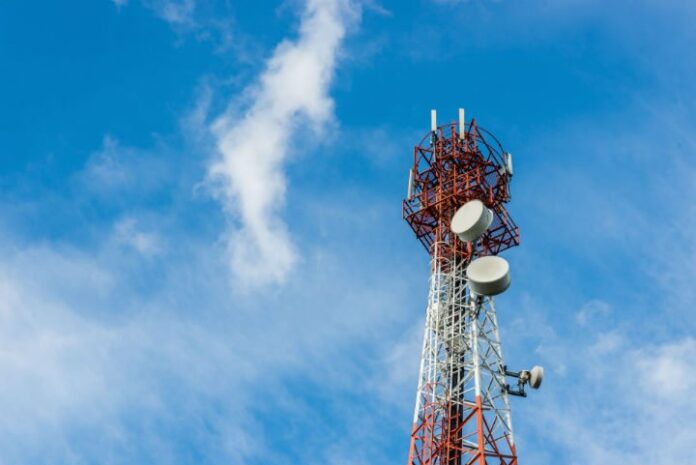Ceragon looks at challenges facing wireless backhaul as the mobile industry evolves towards 5G
The future of mobile technology is gaining steady momentum with “5G” targeted for early commercial deployment by 2020. This major infrastructure overhaul is yet to be fully realized with regards to access technology, however it is clear the services to be offered in 5G networks will pose many challenges and constraints on underlying networks layers, such as wireless transport infrastructure.
Here we’ll describe these challenges and the new technologies and concepts that will allow wireless transmission to satisfy 5G requirements in the 2020’s
5G – the known and the unknown
Many of the building blocks of 5G-technology architecture are not yet known or well defined. Access frequency, for example, is forecasted to migrate from the decimeter-wave realm (sub-3 GHz) to the centimeter-wave and millimeter-wave domains (3 GHz to 300 GHz) in order to satisfy the incredible growth in capacity demand. Yet, the standardization of operating frequencies, as well as other technological and architectural specifications are far from complete. The move to 5G will pose specific and well-defined challenges to network infrastructure.
Such 5G-unique challenges are:
More capacity per device: One of the main goals of 5G services is to provide ultra-high capacity per end device, which means operators are going to need to add more spectrum, improve spectrum efficiency or roll out more infrastructure.
More devices: The exponential growth in the number of “standard” devices (i.e. smartphones, tablets, computers, smart home devices, wearables, etc.) is expected to continue and the average number of devices per person is expected to increase.
New types of devices The mass introduction of “Internet of Things” and machine-to-machine services will create a large increase in the number of connected devices, adding non human-controlled devices to the mix and resulting, as forecasted by GSMA, in an exponential increase in the total number of connected devices
New services: The massive increase in infrastructure capabilities will likely enable new services. Services such as augmented reality, tactile Internet, mobile “anything-as-a-service” and virtual reality will enrich the service offering, provided both by mobile operators and over-the-top service providers.
While the trends and services mentioned above explain the major benefits of 5G, these benefits will require some major changes in the way mobile networks are built, posing significant burdens on the underlying infrastructure – and in particular, the wireless backhaul/transport layer.
Higher capacity density
Multiplying the increase in the capacity per device with the growth in the number of mobile devices served by the network results in a huge increase in capacity density (the required capacity per a given area). This can result in an increase of up to 1,000-times the current capacity density in “4G” networks.
However, since a site capacity increase of 1,000-times is not feasible, and since the forecasted move to higher radio access network frequencies will also require smaller coverage areas per cell site – the mobile grid will become much denser than it is today. This will incorporate the addition of macro cells as well as small cells on poles, towers and rooftops, in addition to mass deployment at the street level, utilizing street furniture and light poles as part of the physical infrastructure.
These changes will challenge the wireless transport network with the following:
· Higher capacity wireless backhaul links per cell site. While current wireless backhaul links serve requirements of hundreds of megabits per second, future links will be required to support dozens of gigabits per second.
· Denser wireless backhaul links, due to denser cell site grids, will require a better utilization of wireless backhaul spectrum, as frequency reuse will be highly limited as links get closer to each other.
· Mass deployment of street level sites will require high capacity non-line-of-sight wireless backhaul links, as well as quickly installed, low-footprint, low-power consumption equipment.
Service and network virtualization
The need to improve operational efficiency, as well to dramatically shorten time-to-market for new, revenue generating services together with the rare opportunity of a forklift change in network infrastructure, will drive mobile operators to massive virtualization of their networks and services. From cloud-based services, through software-defined networking and network functions virtualization infrastructure and even virtualized RAN (cloud RAN), networks will become heavily software driven, requiring the wireless transport infrastructure to seamlessly integrate into the SDN/NFV architecture. This will enable multidomain, multivendor network resource optimization applications as well as faster time-to-market for new services. Cloud RAN will also require cloud backhaul (wireless front haul) to enable RAN resource effective optimization.
Redefining wireless transmission
While wireless backhaul will maintain, if not build upon its position as the most flexible and cost-effective backhaul technology for mobile networks in the 5G era, in order to do so, the technology will need to undergo a major evolution.
– High-capacity wireless backhaul will enable mobile operators to keep-up with capacity demands, and maintain excellent quality of experience for their customers while meeting operational efficiency targets by saving spectrum costs and avoiding costly and time-consuming fiber deployment. Traditional microwave bands (4 to 42 GHz) will leverage wider channel spacing (such as 112 megahertz and 224 megahertz), higher modulations schemes (4096 QAM and up) as well as ultra-high spectral-efficiency techniques such as line-of-sight multiple-input/multiple-output to enable up to 10 Gbps of long- and medium-distance connectivity.
– Short-distance connectivity will heavily utilize higher-frequency connectivity, while E-band and V-band solutions will benefit from additional capacity boosting techniques (currently more common in microwave solutions). This will include XPIC, LoS, MIMO and higher-modulation schemes, enabling rates of more than 20 Gbps per link. As millimeter-wave spectrum will be heavily used for 5G RAN, additional, higher frequency ranges will likely be allocated for wireless transmission. Above 100 GHz, bands such as W-band and D-band, though not yet regulated, are already undergoing initial research and development efforts in order to create power efficient, small form-factor, ultra-high capacity wireless transmission solutions.
– Increasing re-use of wireless backhaul spectrum will also enable operators to meet their operational efficiency targets by saving spectrum fees, as well as increasing the subscribers’ quality of experience by locating their cell site at the optimal location without the constraints posed by wireless backhaul frequency allocation and planning.
– High-capacity NLoS point-to-point wireless transmission solutions will be able to enable true street-level mass deployment to accommodate capacity and coverage requirements in 5G dense-urban deployments. While current, sub-6 GHz, provide a fair solution for 4G street-level deployments backhaul, 5G deployments will require capacities far beyond the scope of such solutions and will call for high capacity, microwave and millimeter-wave NLoS solutions.
– Microwave NLoS, as we already know, is theoretically feasible and has successfully been implemented in several occasions, however, in order to make it commercially efficient, microwave and millimeter-wave NLoS implementations will need to undergo an additional evolution that would incorporate adaptive channel estimation in order to ensure capacity and availability of such solutions. Moreover, a combination of NLoS adaptive channel estimation with MIMO implementation will need to be used, in many cases, as it increases link robustness, which is required in a NLOS environment.
On top of NLoS operation mode, street-level backhaul will also feature low footprint, low-power consumption, zero-touch provisioning and enhanced security.
Virtualized wireless backhaul
Network virtualization enables operators to increase their operational efficiency by making their infrastructure and resource utilization much more efficient. It also allows the very fast introduction of new services and technology.
Wireless backhaul integrates, via open interfaces, with the end-to-end SDN and NFV infrastructure and enables the SDN application to achieve network resource optimization (spectrum, power), higher service availability (with smart reroute mechanisms) and faster introduction of services and technologies. All of the above is applicable in the wireless transmission domain, as well as in multidomain, multivendor environments (assuming vendor alignment to standard based interfaces and applications)
Conclusion
While 5G will bring many benefits to users as well as mobile operators, in order to make it a reality, several challenges must be overcome. Challenges derived from higher capacity requirements, denser cell-site grids, street-level deployments, network virtualization and mission critical applications will drive wireless transmission into a new era, incorporating new frequency bands, capacity boosting techniques, NLoS operation and virtualization enabling operators to increase their operational efficiency, provide higher quality of experience to the subscribers and faster time to market for new services and technologies.
Editor’s Note: In an attempt to broaden our interaction with our readers we have created this Reader Forum for those with something meaningful to say to the wireless industry. We want to keep this as open as possible, but we maintain some editorial control to keep it free of commercials or attacks. Please send along submissions for this section to our editors at: dmeyer@rcrwireless.com.


